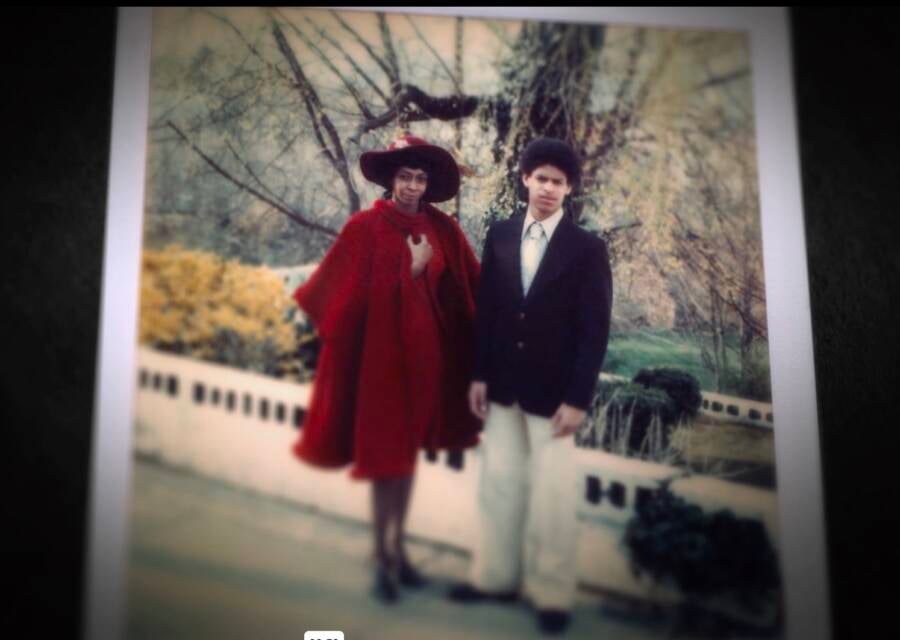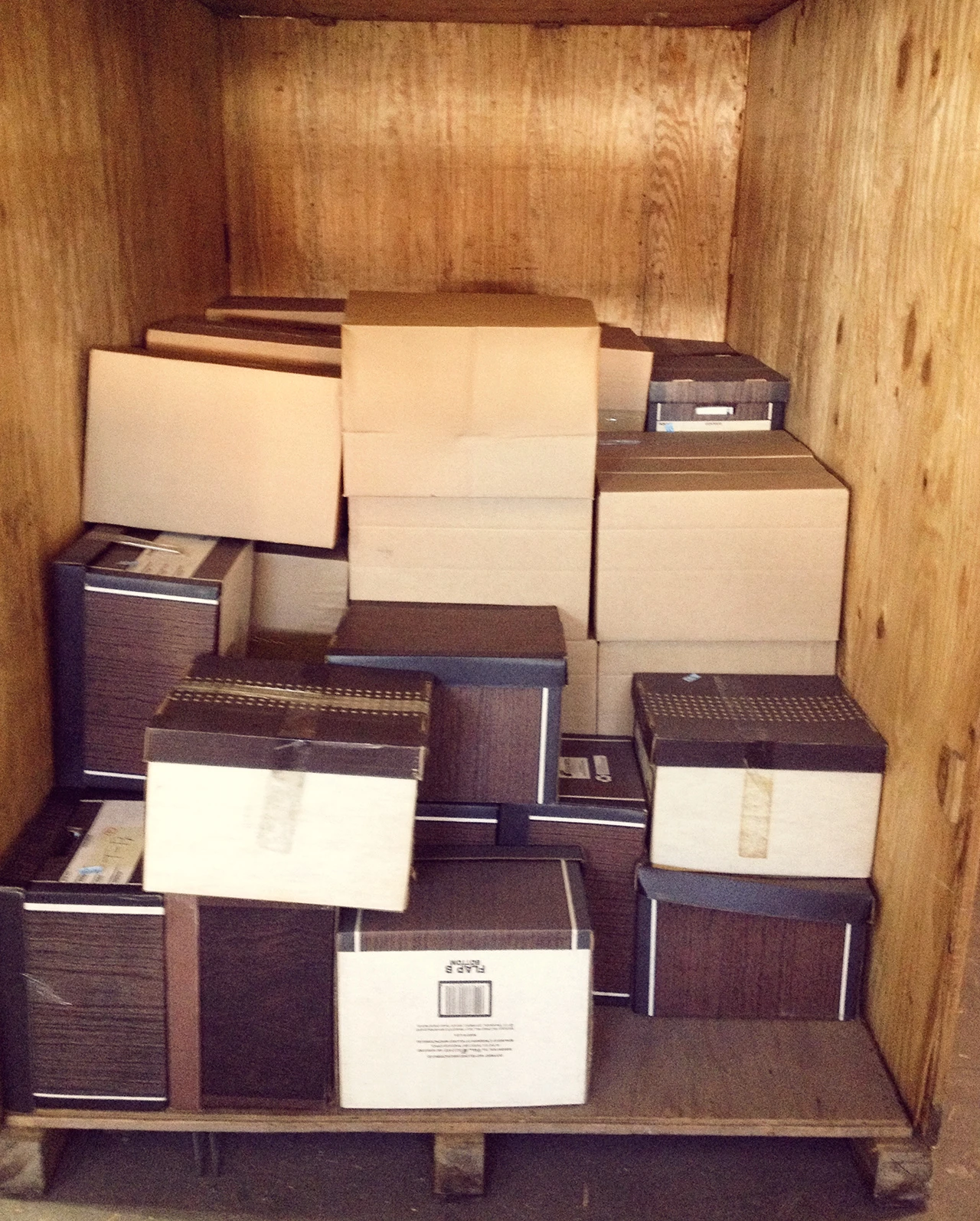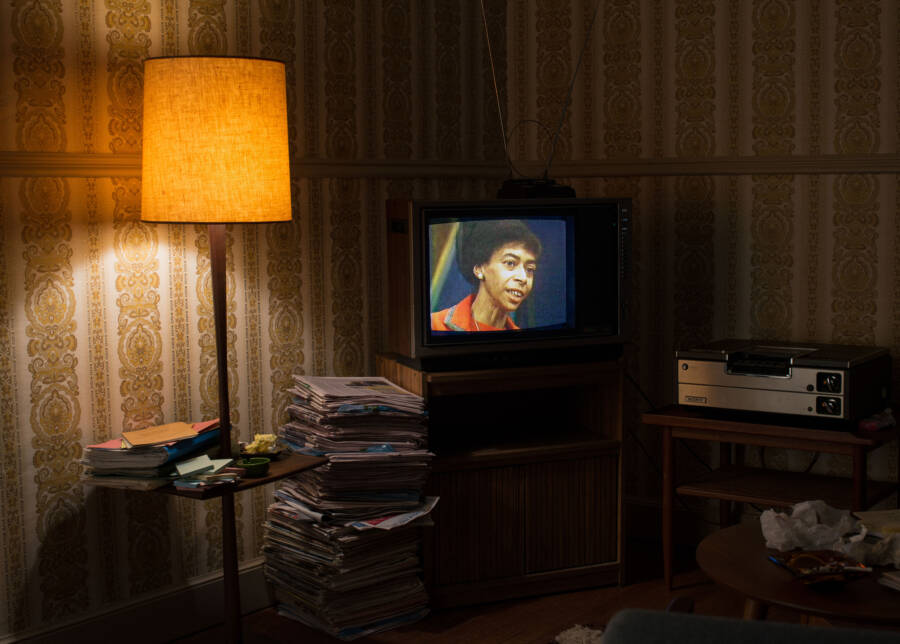Beginning in 1979, former librarian Marion Stokes privately recorded broadcasts from multiple televisions at once, 24 hours a day, eventually accumulating a startling 71,000 tapes of television history.

Zeitgeist FilmsMarion Stokes took it upon herself to record and archive every moment of television.
Marion Stokes believed that the news held crucial historical details at risk of disappearing forever. So, beginning around 1979, the former librarian and civil rights activist began obsessively recording television broadcasts 24 hours a day.
For more than three decades, Stokes attempted to archive every broadcast that she had access to, eventually recording programs on as many as eight televisions at once. In the end, she wound up with more than 70,000 recorded tapes.
Stokes was equal parts compulsive hoarder and guerrilla archivist, and her unique project has raised important questions about media preservation. Although she died in 2012, her project has been given new life thanks to the Internet Archive, which began the painstaking process of digitizing Stokes’ tapes in 2013. This massive undertaking is itself a years-long task, which shows just how prolific Marion Stokes’ work truly was.
Who Was Marion Stokes?
Marion Marguerite Stokes was born on Nov. 25, 1929, in Philadelphia, Pennsylvania. Stokes grew up in the city’s Germantown neighborhood and attended Girls High School. From the 1940s to the early 1960s, she worked as a librarian at the Free Library of Philadelphia.
But it was Stokes’ later work as a civil rights activist, working to help integrate Girard College, that initially made her a standout. She helped organize buses to the 1963 March on Washington, and served as a founding board member of the National Organization for Women. She was likewise the Chair for the Fair Play for Cuba Committee, an organization that opposed the economic boycott of Cuba.

Zeitgeist FilmsMarion Stokes with her son, Michael.
In 1960, Stokes married a teacher named Melvin Metelits, with whom she had one son, Michael. The couple later split, and Marion would go on to marry television anchor John Stokes Jr., whom she met while working as a panelist on a local news show called Input.
The Stokeses later moved into a new home in Rittenhouse Square. Around 1975, Stokes bought herself a Betamax magnetic videotape recorder and began to casually record episodes of her favorite sit-coms, documentaries, and news broadcasts.
But in 1979, amid the Iran Hostage Crisis, something in Marion Stokes changed.
As her son Michael Metelits said in the 2019 documentary Recorder: The Marion Stokes Project, “she hit record and she never stopped.”
The Birth Of A Unique Obsession
Marion Stokes became obsessed with chronicling and archiving news footage. She would purchase countless tapes, load them into the recorder, and let the television run all day long.
Every six to eight hours — depending on the length of the tape — she quickly swapped it out for a new one. Sometimes, this meant rushing home early from a meal to ensure she didn’t miss a second of a broadcast.
Gradually, she bought more and more TVs so she could document multiple programs at once until she was recording from eight different devices.
“It was just a logistical nightmare — that’s really the only way to put it,” Michael Metelits told Fast Company in 2013.

Family handoutMarion Stokes had to buy several additional apartments in which to store her tapes.
As one might expect, these tapes eventually began to take up space — a lot of it. By investing in Apple stock, Stokes saved enough money to buy as many as nine additional apartments, which she used as storage units to hold all of her tapes.
“Pretty much everything else took a back seat,” Metelits said. “It provided a certain rhythm to her life, and a certain amount of deep, deep conviction that this stuff was going to be useful. That somehow, someone would find a way to index it, archive it, store it — that it would be useful.”
The archives eventually grew to approximately 71,000 VHS and Betamax tapes, stored in various locations. These tapes contained not only news broadcasts but also sit-coms, commercials, and talk shows, recorded in Extended Play format.

Zeitgeist FilmsMarion Stokes often watched two televisions at a time, while several others ran throughout her home.
Stokes worried that facts and details from early news broadcasts could become lost or muddied as stories were retold over time. Little inconsistencies could start to add up, leaving viewers with no way of knowing how the story was originally reported.
“Television has been our most pervasive and persuasive medium,” said Roger MacDonald, the librarian in charge of the Internet Archive’s television portion. “But we’ve never really had much of a pause and rewind button on our experience of it to reflect back on television news, to compare and contrast and mine it for knowledge.”
Archiving television programs was not Stokes’ only fascination. In fact, the tech-savvy hoarder also took an early interest in Apple computers — and amassed 192 Macintosh computers before she died.
Still, it was her obsessive archiving of the daily news that would be her ultimate legacy.
The Legacy And Lasting Impact Of Marion Stokes’ Work
Marion Stokes continued to record and archive television footage up until the end. She lived to be 83 years old. And as it would turn out, her last day on Earth would coincide with her last recordings — and a horrible tragedy.
Stokes died on Dec. 14, 2012. That very same day, news organizations across the United States were reporting on the mass shooting at Sandy Hook Elementary School.
“I got to the house and this horrific news was going on,” Metelits said. “Kids being killed. Teachers being killed while shielding children, that sort of thing… I remember being very grateful that that wasn’t the last news she saw.”
Marion Stokes’ project died with her that day. Her son did not continue her archival work, saying he “came to respect her project, but it wasn’t my project.”

Family handoutIn total, Stokes collected more than 400,000 hours of footage.
But while no new tapes would ever be added to Stokes’ collection, her project did find new life in 2013, just a year after her death, when the Internet Archive began the process of digitizing Stokes’ tapes and putting them online.
Then, in 2019, filmmaker Matt Wolf released his documentary about Marion Stokes, allowing audiences to understand Stokes’ obsession with archiving television. The film premiered at the Tribeca Film Festival and was met with positive reviews, with some critics noting that the film — and Stokes herself — made a compelling case for guerrilla archiving.
Marion Stokes’ story also resonates strongly today, albeit somewhat differently, as private ownership of the media we consume daily begins to fade. With more and more services shifting to a streaming or digital model, only to then restrict access to certain media or get rid of it altogether, many are considering the merits of physical media as a means of preserving history.
As MacDonald told Fast Company, some moments in television history have likely been lost forever.
“But who knows,” he said. “Because there may be other Marion Stokeses out there who had that similar passion.”
After reading about the massive television archive kept by Marion Stokes, see 45 stunning unpublished photos from the National Geographic archives. Or, meet Dorothy Height, the “Godmother” of the civil rights movement.





